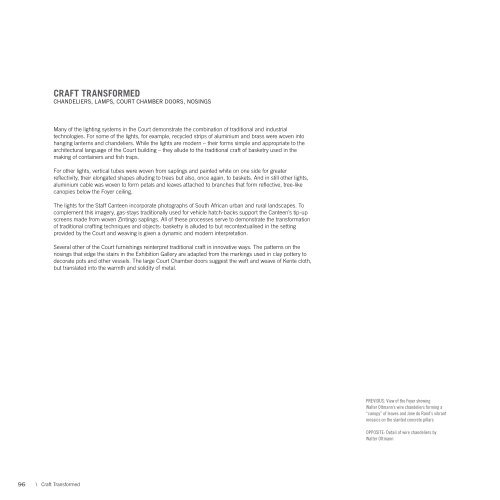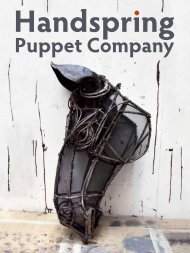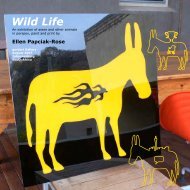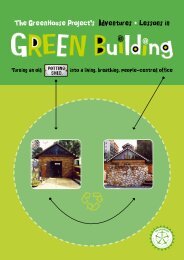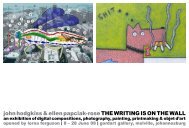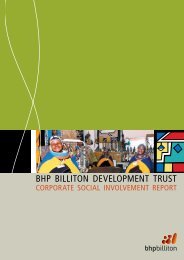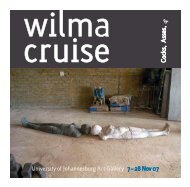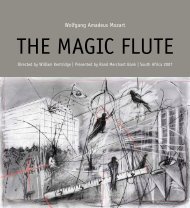the art of the constitutional court of south africa - ELLEN PAPCIAK ...
the art of the constitutional court of south africa - ELLEN PAPCIAK ...
the art of the constitutional court of south africa - ELLEN PAPCIAK ...
Create successful ePaper yourself
Turn your PDF publications into a flip-book with our unique Google optimized e-Paper software.
CRAFT TRANSFORMED<br />
CHANDELIERS, LAMPS, COURT CHAMBER DOORS, NOSINGS<br />
Many <strong>of</strong> <strong>the</strong> lighting systems in <strong>the</strong> Court demonstrate <strong>the</strong> combination <strong>of</strong> traditional and industrial<br />
technologies. For some <strong>of</strong> <strong>the</strong> lights, for example, recycled strips <strong>of</strong> aluminium and brass were woven into<br />
hanging lanterns and chandeliers. While <strong>the</strong> lights are modern – <strong>the</strong>ir forms simple and appropriate to <strong>the</strong><br />
architectural language <strong>of</strong> <strong>the</strong> Court building – <strong>the</strong>y allude to <strong>the</strong> traditional craft <strong>of</strong> basketry used in <strong>the</strong><br />
making <strong>of</strong> containers and fish traps.<br />
For o<strong>the</strong>r lights, vertical tubes were woven from saplings and painted white on one side for greater<br />
reflectivity, <strong>the</strong>ir elongated shapes alluding to trees but also, once again, to baskets. And in still o<strong>the</strong>r lights,<br />
aluminium cable was woven to form petals and leaves attached to branches that form reflective, tree-like<br />
canopies below <strong>the</strong> Foyer ceiling.<br />
The lights for <strong>the</strong> Staff Canteen incorporate photographs <strong>of</strong> South African urban and rural landscapes. To<br />
complement this imagery, gas-stays traditionally used for vehicle hatch-backs support <strong>the</strong> Canteen’s tip-up<br />
screens made from woven Zintingo saplings. All <strong>of</strong> <strong>the</strong>se processes serve to demonstrate <strong>the</strong> transformation<br />
<strong>of</strong> traditional crafting techniques and objects: basketry is alluded to but recontextualised in <strong>the</strong> setting<br />
provided by <strong>the</strong> Court and weaving is given a dynamic and modern interpretation.<br />
Several o<strong>the</strong>r <strong>of</strong> <strong>the</strong> Court furnishings reinterpret traditional craft in innovative ways. The patterns on <strong>the</strong><br />
nosings that edge <strong>the</strong> stairs in <strong>the</strong> Exhibition Gallery are adapted from <strong>the</strong> markings used in clay pottery to<br />
decorate pots and o<strong>the</strong>r vessels. The large Court Chamber doors suggest <strong>the</strong> weft and weave <strong>of</strong> Kente cloth,<br />
but translated into <strong>the</strong> warmth and solidity <strong>of</strong> metal.<br />
PREVIOUS: View <strong>of</strong> <strong>the</strong> Foyer showing<br />
Walter Oltmann’s wire chandeliers forming a<br />
“canopy” <strong>of</strong> leaves and Jane du Rand’s vibrant<br />
mosaics on <strong>the</strong> slanted concrete pillars<br />
OPPOSITE: Detail <strong>of</strong> wire chandeliers by<br />
Walter Oltmann<br />
96<br />
\ Craft Transformed


